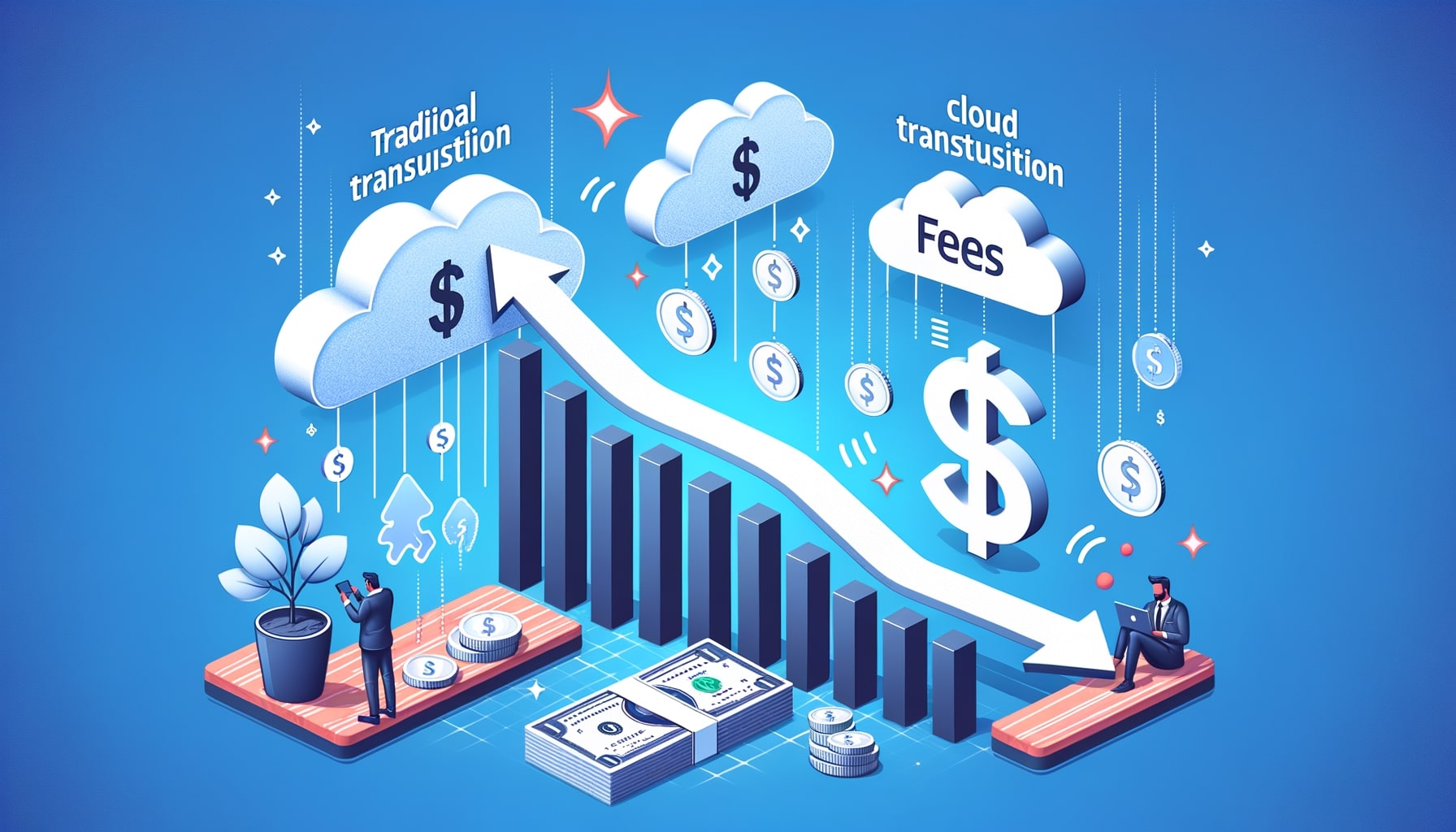How Cloud Payments Support Subscription-Based Business Models
Subscription-based business models have gained significant popularity in recent years, revolutionizing the way companies offer products and services to consumers. Instead of traditional one-time purchases, subscription-based businesses provide ongoing access to products or services for a recurring fee. This model has been successfully adopted by various industries, including software, media streaming, e-commerce, and even healthcare.
The rise of subscription-based business models can be attributed to several factors. Firstly, consumers are increasingly valuing convenience and personalized experiences over ownership. Subscription services offer a hassle-free way to access a wide range of products and services without the need for upfront investments or long-term commitments. This shift in consumer behavior has created a massive market opportunity for businesses to tap into.
Additionally, subscription-based models provide businesses with a predictable and recurring revenue stream. Instead of relying on sporadic one-time purchases, companies can establish a loyal customer base and generate consistent revenue month after month. This stability allows businesses to plan and invest in long-term growth strategies, such as product development and customer acquisition.
The Benefits of Cloud Payments for Subscription-Based Businesses
Cloud payments have emerged as a game-changer for subscription-based businesses, offering a range of benefits that traditional payment methods cannot match. Cloud payment solutions leverage cloud computing technology to securely process and manage payments, providing businesses with a seamless and efficient payment infrastructure. Let’s explore some of the key benefits of cloud payments for subscription-based businesses:
- Flexibility and Scalability: Cloud payment solutions offer unparalleled flexibility and scalability, allowing businesses to easily adapt to changing customer demands and scale their operations. With cloud payments, businesses can quickly add or remove subscription plans, modify pricing structures, and adjust payment frequencies to meet the evolving needs of their customers. This agility enables businesses to stay competitive in a rapidly changing market.
- Seamless Integration: Cloud payment solutions seamlessly integrate with existing business systems, such as customer relationship management (CRM) platforms, billing systems, and subscription management platforms. This integration eliminates the need for manual data entry and reduces the risk of errors, streamlining payment processes and improving operational efficiency. Furthermore, cloud payment solutions can be easily integrated with various payment gateways, enabling businesses to accept a wide range of payment methods and currencies.
- Automated Billing and Invoicing: Cloud payment solutions automate the billing and invoicing process, saving businesses time and resources. Instead of manually generating invoices and sending them to customers, cloud payment solutions automatically generate and deliver invoices based on predefined billing cycles. This automation reduces the risk of human error and ensures timely and accurate billing, improving cash flow and customer satisfaction.
- Subscription Lifecycle Management: Cloud payment solutions provide comprehensive subscription lifecycle management capabilities, allowing businesses to efficiently manage the entire customer journey, from onboarding to renewal. These solutions enable businesses to automate subscription sign-ups, upgrades, downgrades, and cancellations, reducing administrative overhead and improving customer experience. Additionally, cloud payment solutions can send automated notifications and reminders to customers, ensuring they stay informed about their subscription status.
- Real-Time Analytics and Reporting: Cloud payment solutions offer robust analytics and reporting features, providing businesses with valuable insights into their subscription business. These solutions generate real-time reports on key metrics, such as customer churn rate, average revenue per user (ARPU), and customer lifetime value (CLV). By analyzing these metrics, businesses can identify trends, make data-driven decisions, and optimize their pricing, marketing, and retention strategies.
Streamlining Payment Processes with Cloud Payment Solutions
One of the primary advantages of cloud payment solutions for subscription-based businesses is the ability to streamline payment processes. Traditional payment methods, such as manual invoicing and check payments, are time-consuming, error-prone, and lack the automation capabilities required to efficiently manage recurring payments. Cloud payment solutions address these challenges by automating payment processes and providing businesses with a centralized platform to manage all aspects of their subscription business.
Cloud payment solutions enable businesses to set up recurring payment schedules, automatically charge customers’ credit cards or bank accounts, and send payment confirmations and receipts. This automation eliminates the need for manual intervention, reducing the risk of errors and ensuring timely and accurate payments. Furthermore, cloud payment solutions can handle complex billing scenarios, such as prorated charges, trial periods, and discounts, without requiring manual calculations.
In addition to automating payment processes, cloud payment solutions offer advanced features to enhance the customer experience. For example, businesses can provide customers with self-service portals where they can update their payment information, view their billing history, and manage their subscriptions. This self-service functionality empowers customers and reduces the burden on customer support teams, improving overall customer satisfaction.
Enhancing Customer Experience through Cloud Payments

Customer experience is a critical factor in the success of subscription-based businesses. Cloud payment solutions play a crucial role in enhancing the customer experience by providing a seamless and convenient payment process. Let’s explore how cloud payments contribute to an improved customer experience:
- Frictionless Onboarding: Cloud payment solutions simplify the onboarding process for new customers. Instead of filling out lengthy forms and manually entering payment information, customers can quickly sign up for a subscription using pre-filled forms or one-click payment options. This frictionless onboarding experience reduces customer drop-off rates and increases conversion rates.
- Flexible Payment Options: Cloud payment solutions offer a wide range of payment options, allowing customers to choose the method that suits them best. Whether it’s credit cards, debit cards, digital wallets, or bank transfers, businesses can provide customers with the flexibility to pay using their preferred payment method. This flexibility enhances customer satisfaction and reduces barriers to entry.
- Transparent Billing: Cloud payment solutions provide customers with transparent and easy-to-understand billing. Customers can access their billing history, view detailed invoices, and understand the breakdown of charges. This transparency builds trust and reduces customer disputes or inquiries related to billing.
- Automated Renewals and Upgrades: Cloud payment solutions automate the renewal and upgrade process, ensuring a seamless experience for customers. Instead of manually renewing their subscriptions or contacting customer support for upgrades, customers can rely on the automated processes enabled by cloud payment solutions. This automation reduces customer effort and improves retention rates.
- Proactive Notifications: Cloud payment solutions can send automated notifications to customers regarding upcoming payments, failed payments, or changes to their subscription plans. These proactive notifications keep customers informed and minimize surprises or confusion. By providing timely and relevant information, businesses can enhance the overall customer experience.
Ensuring Security and Compliance in Cloud Payment Systems
Security and compliance are paramount when it comes to handling sensitive payment information. Cloud payment systems employ robust security measures to protect customer data and ensure compliance with industry regulations. Let’s explore some of the key security and compliance features of cloud payment systems:
- Data Encryption: Cloud payment systems use encryption technology to secure sensitive payment data during transmission and storage. Encryption ensures that customer data is unreadable to unauthorized parties, reducing the risk of data breaches or unauthorized access.
- Tokenization: Cloud payment systems employ tokenization techniques to replace sensitive payment data, such as credit card numbers, with unique tokens. These tokens are used for payment processing, while the actual payment data is securely stored in a separate, highly protected environment. Tokenization minimizes the risk of exposing sensitive payment information and simplifies compliance with Payment Card Industry Data Security Standard (PCI DSS) requirements.
- Secure Payment Gateways: Cloud payment systems integrate with secure payment gateways that comply with industry standards and regulations. These payment gateways employ multiple layers of security, including fraud detection and prevention mechanisms, to ensure secure payment processing.
- Compliance with Regulatory Standards: Cloud payment systems adhere to various regulatory standards, such as PCI DSS, General Data Protection Regulation (GDPR), and Health Insurance Portability and Accountability Act (HIPAA), depending on the industry and geographic location. Compliance with these standards ensures that customer data is handled in a secure and compliant manner.
- Regular Security Audits: Cloud payment system providers conduct regular security audits and assessments to identify and address potential vulnerabilities. These audits help ensure that the payment system remains secure and compliant with evolving security standards.
Integrating Cloud Payments with Subscription Management Platforms
To fully leverage the benefits of cloud payments, businesses can integrate cloud payment solutions with subscription management platforms. Subscription management platforms provide businesses with the tools and capabilities to manage the entire subscription lifecycle, from customer acquisition to retention. By integrating cloud payments with subscription management platforms, businesses can streamline their operations, improve customer experience, and gain valuable insights into their subscription business.
Integration between cloud payment solutions and subscription management platforms enables real-time synchronization of customer data, payment information, and subscription details. This synchronization eliminates the need for manual data entry and ensures that customer records are always up to date. For example, when a customer upgrades their subscription plan, the integration automatically updates the payment system and the subscription management platform, ensuring accurate billing and access to the upgraded features.
Furthermore, integration with subscription management platforms allows businesses to leverage advanced features, such as customer segmentation, targeted promotions, and personalized offers. By analyzing customer data and payment history, businesses can identify upsell and cross-sell opportunities, tailor their marketing campaigns, and deliver personalized experiences to customers. This level of personalization enhances customer satisfaction and increases the likelihood of upselling or retaining customers.
Optimizing Revenue and Retention with Cloud Payment Analytics
Cloud payment solutions offer robust analytics and reporting capabilities that enable businesses to optimize their revenue and retention strategies. By analyzing key metrics and trends, businesses can identify areas for improvement, make data-driven decisions, and maximize their subscription business’s profitability. Let’s explore some of the key analytics and reporting features provided by cloud payment solutions:
- Churn Rate Analysis: Churn rate is a critical metric for subscription-based businesses, representing the percentage of customers who cancel their subscriptions within a given period. Cloud payment solutions provide churn rate analysis, allowing businesses to identify the reasons behind customer churn and take proactive measures to reduce it. By understanding the factors contributing to churn, businesses can implement targeted retention strategies, such as personalized offers or improved customer support.
- Average Revenue per User (ARPU): ARPU is a key metric that measures the average revenue generated per customer. Cloud payment solutions calculate ARPU by dividing the total revenue by the number of active customers. By analyzing ARPU, businesses can identify trends and patterns, such as changes in customer spending behavior or the impact of pricing changes. This analysis helps businesses optimize their pricing strategies and identify opportunities for revenue growth.
- Customer Lifetime Value (CLV): CLV represents the total revenue a business can expect to generate from a customer over their entire relationship. Cloud payment solutions calculate CLV by considering factors such as average customer lifespan and average revenue per customer. By analyzing CLV, businesses can identify high-value customers, segment their customer base, and allocate resources effectively to maximize customer lifetime value.
- Payment Failure Analysis: Cloud payment solutions provide detailed analysis of payment failures, such as declined transactions or expired credit cards. By understanding the reasons behind payment failures, businesses can take proactive measures to reduce churn and improve revenue recovery. For example, businesses can send automated notifications to customers with failed payments, offering alternative payment methods or reminders to update their payment information.
- Subscription Performance Metrics: Cloud payment solutions generate real-time reports on various subscription performance metrics, such as subscription growth rate, renewal rate, and upgrade rate. By analyzing these metrics, businesses can identify trends and patterns, optimize their marketing and retention strategies, and make data-driven decisions to drive revenue growth.
Overcoming Challenges and Considerations in Implementing Cloud Payments
While cloud payments offer numerous benefits for subscription-based businesses, there are also challenges and considerations that need to be addressed during implementation. Let’s explore some of the key challenges and considerations businesses should keep in mind when implementing cloud payments:
- Data Security and Privacy: As cloud payment systems handle sensitive payment information, businesses need to ensure that appropriate security measures are in place to protect customer data. This includes encryption, tokenization, secure payment gateways, and compliance with industry regulations. Businesses should carefully evaluate the security features and certifications of cloud payment solutions before implementation.
- Integration Complexity: Integrating cloud payment solutions with existing business systems, such as CRM platforms and subscription management platforms, can be complex. Businesses should consider the compatibility and ease of integration when selecting a cloud payment solution. It is essential to choose a solution that offers seamless integration capabilities and provides comprehensive documentation and support.
- Customer Adoption and Education: Introducing a new payment method or platform to customers may require education and support to ensure smooth adoption. Businesses should communicate the benefits of cloud payments to customers and provide clear instructions on how to set up and manage their payment accounts. Offering customer support channels, such as live chat or dedicated helplines, can help address any questions or concerns customers may have.
- Payment Gateway Selection: Cloud payment solutions integrate with various payment gateways, each with its own features, pricing structures, and geographic coverage. Businesses should carefully evaluate payment gateway options and select the one that best suits their needs. Factors to consider include transaction fees, supported payment methods, international coverage, and fraud prevention capabilities.
- Scalability and Performance: As subscription-based businesses grow, the volume of transactions and the complexity of payment processes increase. Businesses should ensure that the chosen cloud payment solution can scale to handle the growing demands. This includes evaluating the solution’s performance, uptime guarantees, and the ability to handle peak transaction volumes.
Frequently Asked Questions
Q.1: What is a subscription-based business model?
A subscription-based business model is a pricing strategy where customers pay a recurring fee to access products or services over a specified period. Instead of one-time purchases, customers subscribe to ongoing access, typically on a monthly or annual basis.
Q.2: What are the benefits of cloud payments for subscription-based businesses?
Cloud payments offer benefits such as flexibility and scalability, seamless integration with existing systems, automated billing and invoicing, comprehensive subscription lifecycle management, and real-time analytics and reporting.
Q.3: How do cloud payment solutions enhance the customer experience?
Cloud payment solutions enhance the customer experience by providing frictionless onboarding, flexible payment options, transparent billing, automated renewals and upgrades, and proactive notifications.
Q.4: How do cloud payment systems ensure security and compliance?
Cloud payment systems ensure security and compliance through data encryption, tokenization, secure payment gateways, and adherence to regulatory standards such as PCI DSS, GDPR, and HIPAA.
Q.5: How can businesses optimize revenue and retention with cloud payment analytics?
Cloud payment analytics enable businesses to analyze metrics such as churn rate, average revenue per user (ARPU), customer lifetime value (CLV), payment failures, and subscription performance. By analyzing these metrics, businesses can optimize their pricing, marketing, and retention strategies.
Conclusion
Cloud payments have become an essential component for subscription-based businesses, offering numerous benefits such as enhanced payment flexibility, streamlined subscription management, improved customer experience, and data-driven insights. By leveraging cloud payment solutions, businesses can optimize their subscription strategies, ensure security and compliance, integrate with billing platforms, and scale their operations effectively.
While implementing cloud payments may present challenges, careful planning, collaboration with experienced partners, and effective change management can overcome these obstacles. As the subscription economy continues to thrive, businesses that embrace cloud payment solutions will be well-positioned to capitalize on the growing demand for subscription-based products and services.










